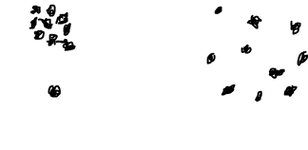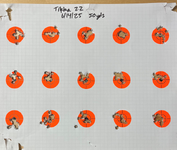My dad has a benchrest gun, 13lbs, Benchmark 24" M24 chambered in 6BR, Pierce single shot action, Nightforce 12-42x56 benchrest scope. I borrowed it from him to see if I could improve his load. His best load that he has shot in it for years is Lapua brass, CCI BR4s, 29.5gr Varget, Sierra 107 Matchking jumping 0.010". When I picked the gun up he also gave me 25rds of his ammo. I started by shooting all this ammo to establish a baseline for precision. Results were a 5x5 agg of 0.46" at 100yds, mean radius 0.21", SD radius 0.12".
I loaded a powder sweep, 3 shots each from 29.2 to 30.4 in 0.3gr increments, which included his original powder charge. Group sizes were as follows:
29.2, 0.32"
29.5, 0.26"
29.8, 0.26"
30.1, 0.16"
30.4, 0.30"
I of course picked 30.1 as the new "node" of interest, since I could see a "pattern" of larger then smaller groups, and it was significantly better (~60%) than the loads on either side. So then to apply the same level of rigor to it as my Dad's load, I loaded up 25 and shot 5x5. Average group was 0.50, mean radius 0.21", SD radius 0.12". Literally IDENTICAL performance to his load which was 0.6gr less powder.


